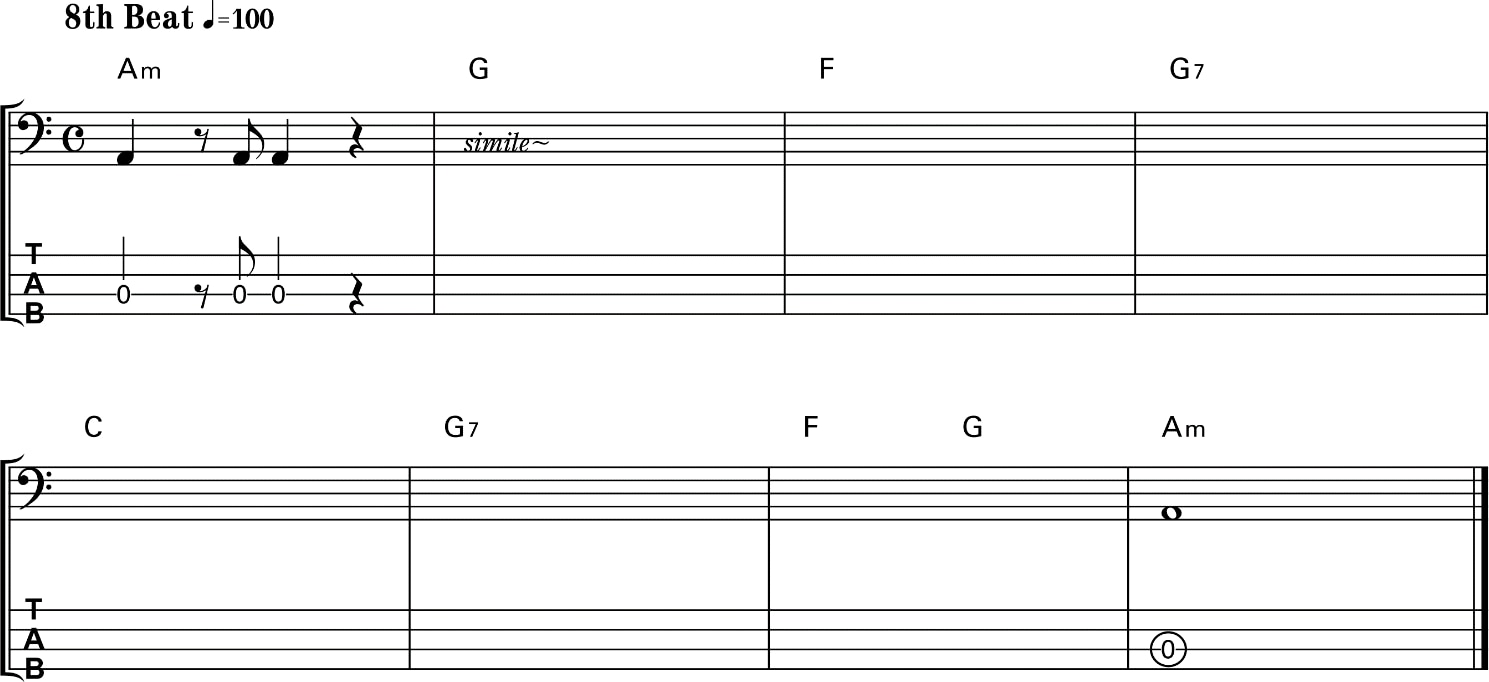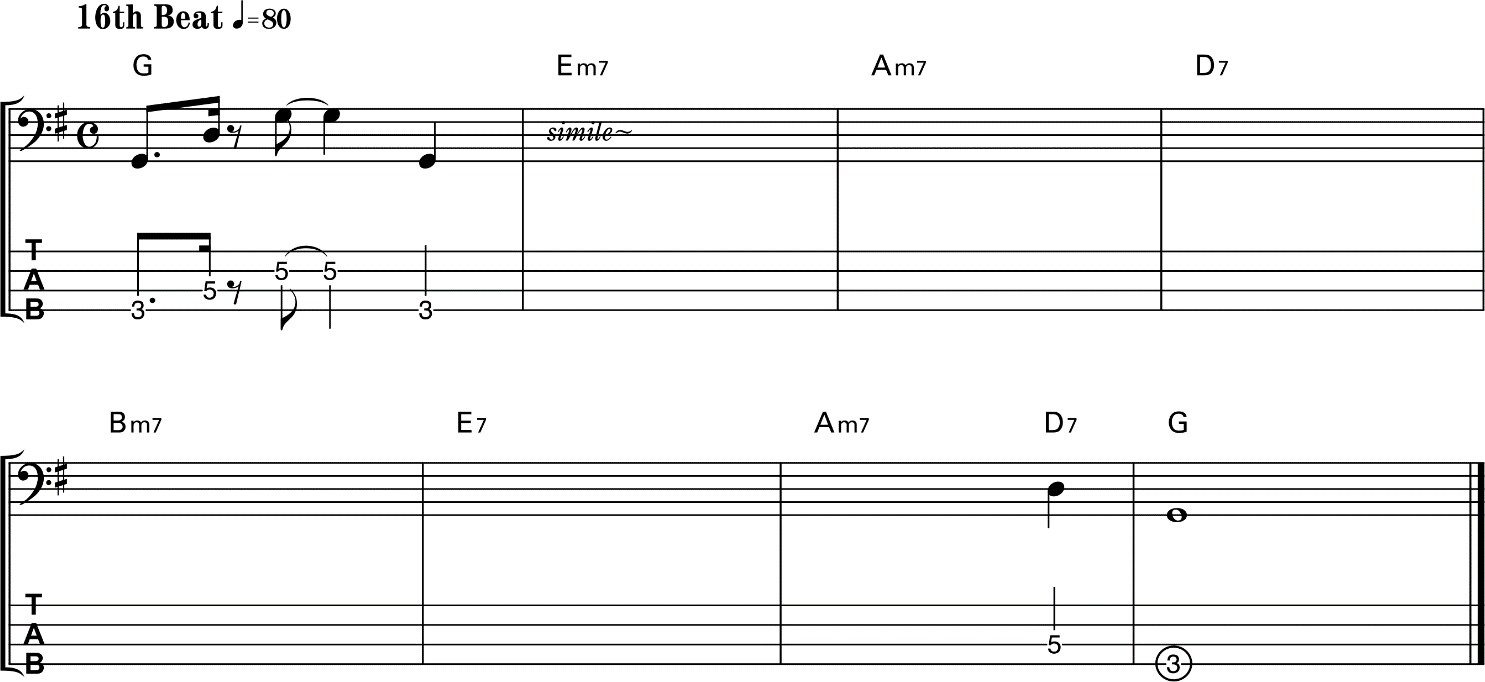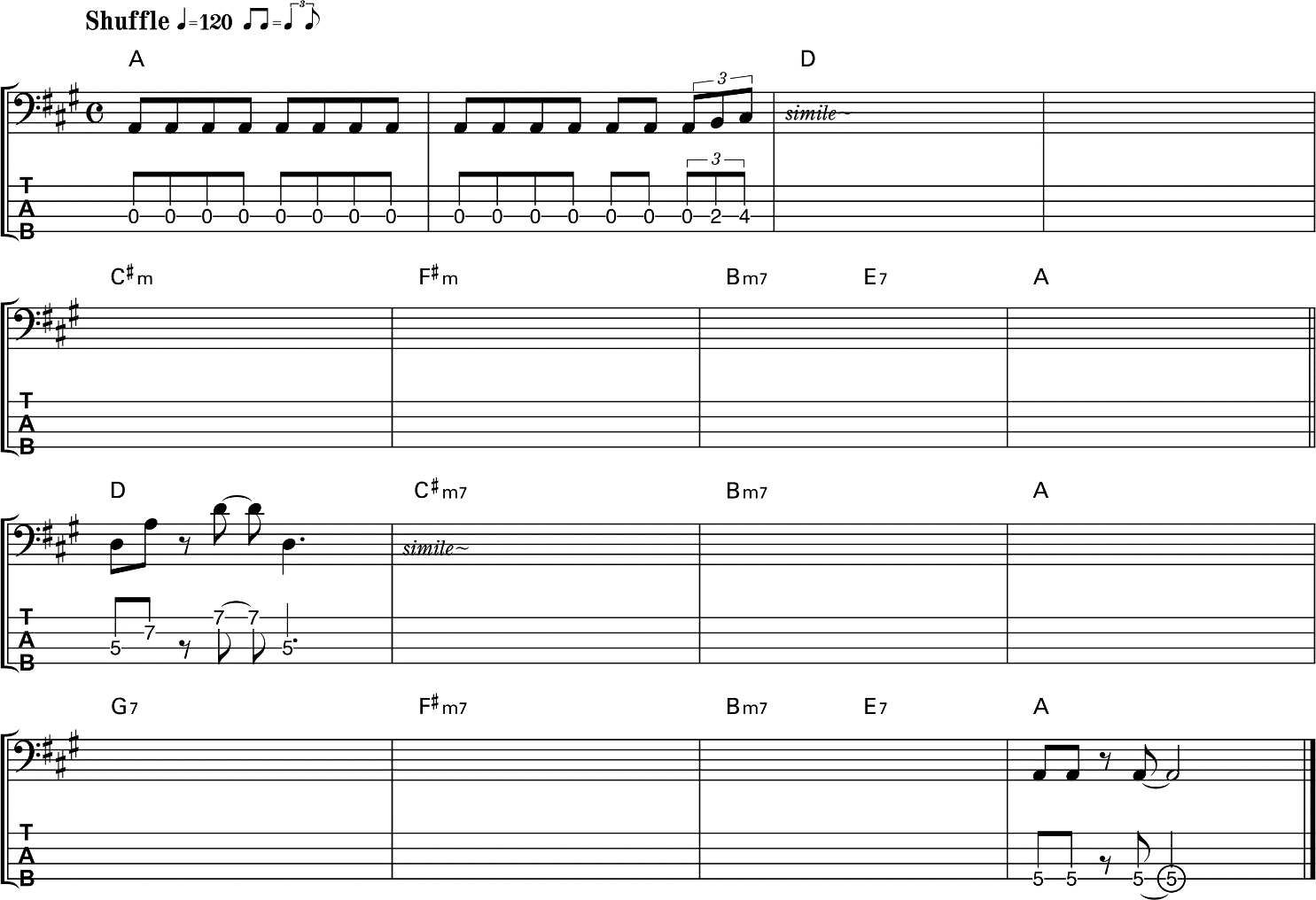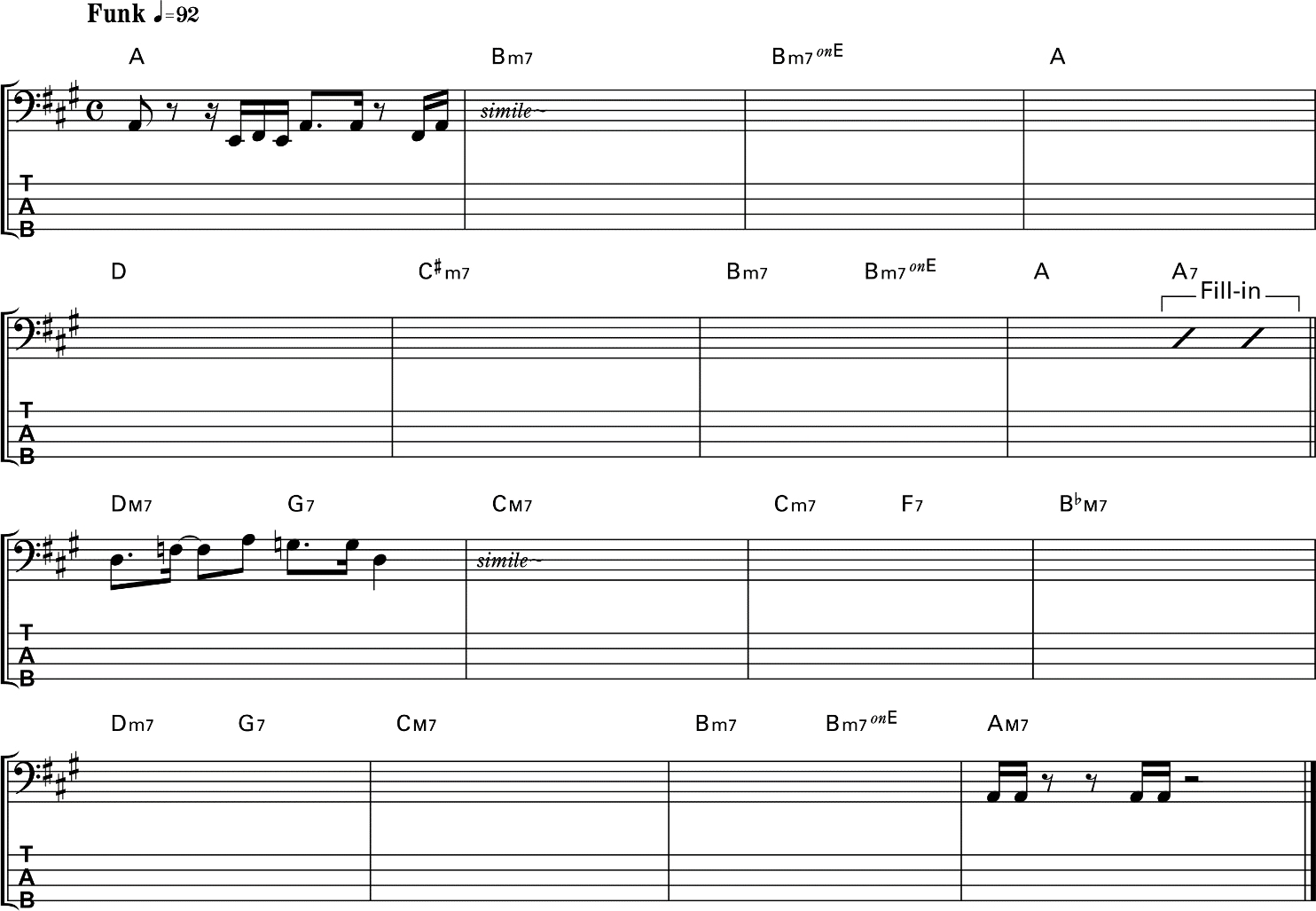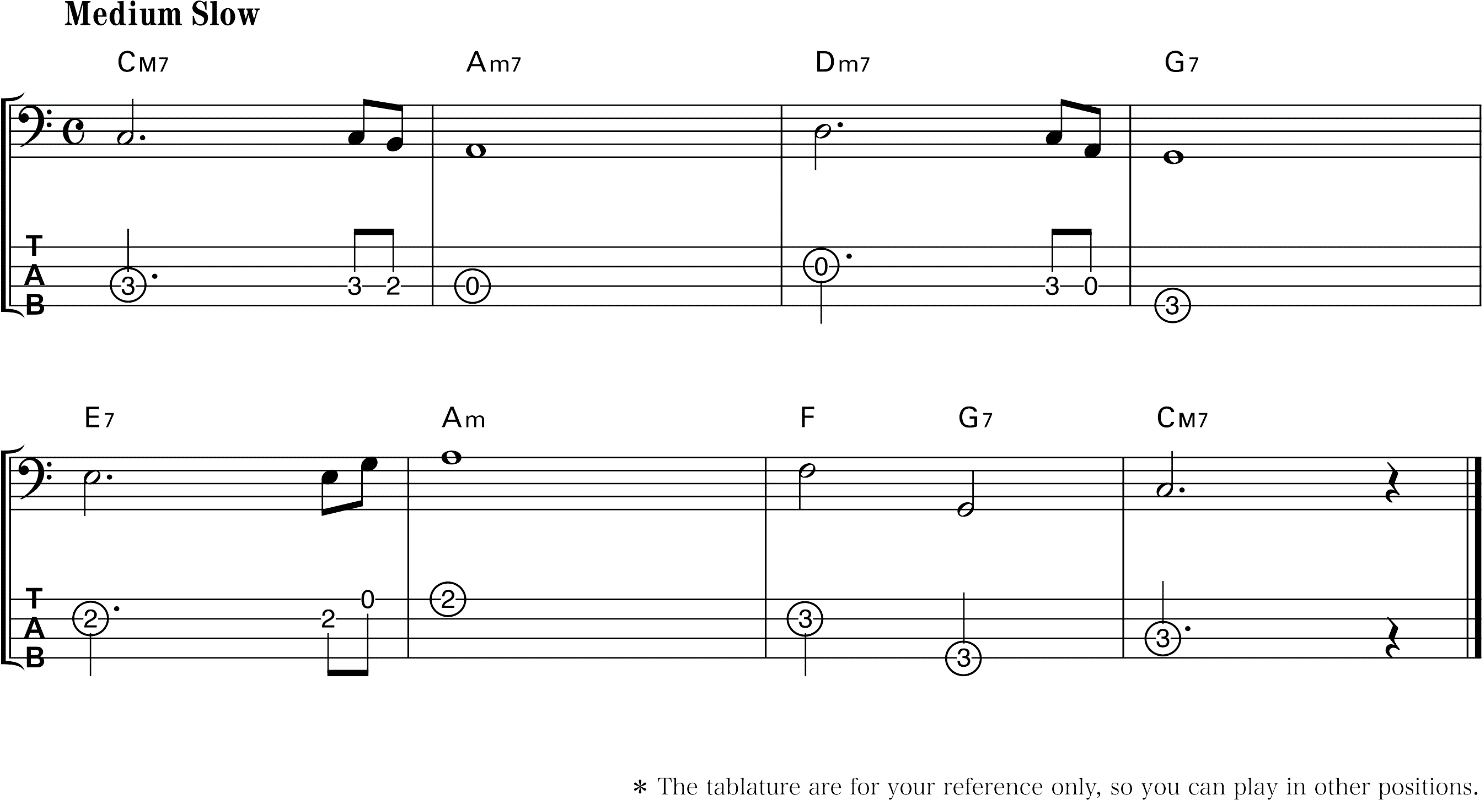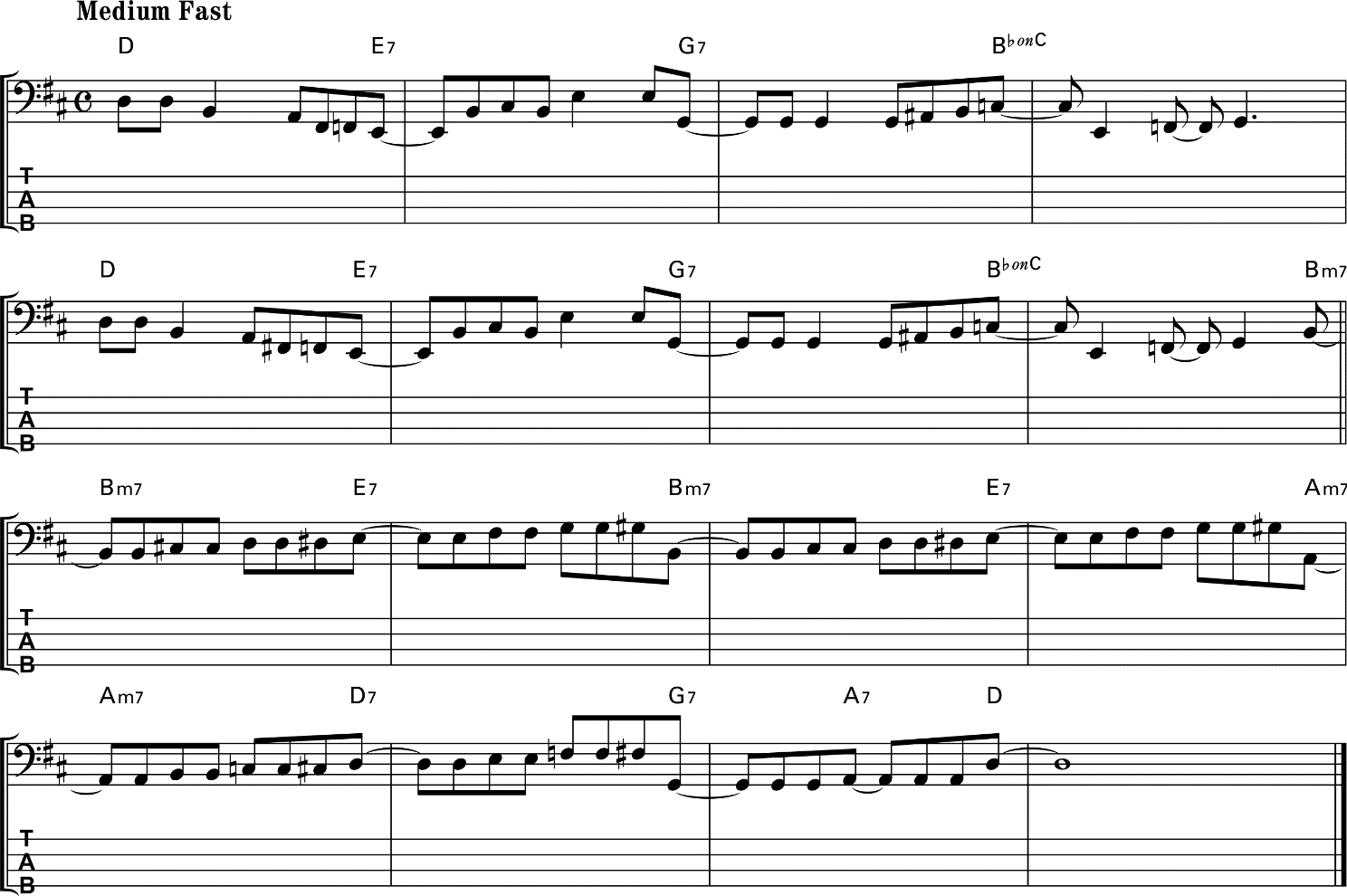Electric Bass Grade 10-6
Examination Procedure
Grade 10-6
Duration
Grades 10-8: 15 minutes, Grades 7-6: 20 minutes
Instrument and Equipment
Candidates are expected to bring the instrument and equipment needed for the exam. (An amplifier and a lead will be prepared in the exam room.)
Candidates are expected to adjust the sound and volume as needed for each subject. Candidates may ask examiners a question if they don’t understand how to use the amplifier in the exam room.
Candidates may bring and use their own effectors.
Candidates are expected to tune their instrument to A=440Hz on their own. (For Grades 10 and 9, quality of tuning is not evaluated. For Grades 8-6, quality of tuning is one of the evaluation points.) A tuning meter may be brought into the exam room, and may be used during the exam.
If candidates have a problem with their instrument during the exam, for example, a broken string, a spare instrument prepared in the exam room, may be used. Candidates are expected to solve any problems prior to the exam on their own.
Subject Details
I. Repertoire
I-I. Compulsory Piece
Candidates choose from Set A or Set B of the Compulsory Piece List, and play it with the backing track. (Grades 10-7: two pieces, Grade 6: one piece)
Procedure
1. Examiners play the beginning of the backing track for several bars so that the candidate can play along to set an appropriate volume and balance.
2. Candidate plays the piece with the backing track.
- Note:
- Candidates are allowed to use the score if necessary.
- Examiners may stop the performance before it reaches the end of the piece.
- The backing track files are prepared at the exam room.
- Candidates are expected to repeat the patterns as many times as needed to play continuously with the backing track.
Compulsory Piece List
Grade 10
Set A: Book 1 Unit 1 / Exercise No.4, 11
Set B: Book 1 Unit 1 / Exercise No.7, 16
Grade 9
Set A: Book 1 Unit 3 / Exercise No.11, 16
Set B: Book 1 Unit 3 / Exercise No.12, 18
Grade 8
Set A: Book 1 Unit 4 / Exercise No.1, Unit 5 / Exercise No.12
Set B: Book 1 Unit 4 / Exercise No.16, Unit 5 / Exercise No.23
Grade 7
Set A: Book 2 Unit 2 / Exercise No.15, Unit 4 / Exercise No.12
Set B: Book 2 Unit 4 / Exercise No.4, Unit 5 / Exercise No.9
Grade 6
Set A: Book 2 Unit 8 / Exercise No.13
Set B: Book 2 Unit 11 / Exercise No.13
I-II. Free Selection
Candidates prepare one free selection piece and play it.
Points to consider when selecting a piece to prepare for Free Selection:
The level of the Free Selection piece is expected to be equivalent to the Compulsory Piece for the grade.
Candidates may choose a Free Selection piece from the textbook or Compulsory Piece List provided that it is not the same piece they have prepared for the Compulsory Piece selection.
Procedure
1. Examiners play the beginning of the backing track for several bars so that the candidate can play along and set an appropriate volume and balance.
2. Candidate plays the piece with the backing track.
- Note:
- Candidates are expected to bring the scores of the pieces they have prepared to the exam.
- Examiners may ask to see the score.
- Candidates are allowed to use the score if necessary.
- A simple score that shows the structure of the piece, chord progression, etc. is acceptable. The score itself will not to be evaluated.
- Backing tracks for pieces chosen from the textbook will be prepared in the exam room. However, if candidates choose a piece from outside of the textbook, they are expected to bring any MP3 files or MIDI data that they will use as a backing track to the exam.
- Examiners may stop the performance before it reaches the end of the piece.
- Candidates may use their own effectors to make a right sound.
II. Pattern Playing
Examiners select one piece and ask candidates to play based on the presented bass pattern and chord progression along with the rhythm track by sight.
Procedure
1. Examiners select one Bass pattern for the candidate to play.
2. Candidate is given 30 seconds to look at the score as preview.
3. Examiners play the beginning of the rhythm track for several bars so that the candidate can play along and set an appropriate volume and balance.
4. Candidate plays the bass pattern with the rhythm track after the examiner’s cue.

Examples
III. Sight Playing
Examiners select one piece and ask the candidate to play it by sight.

Procedure
1. Candidate is presented the score of the exam piece.
2. Candidate is given 30 seconds to look at the score as preview.
3. Candidate plays the piece after the examiner’s cue.
- Note:
- Movements, such as playing without sound, fingering/stroke motion practice etc., are not allowed during preview time.
Examples
IV. Scale
Candidates play one (Grades 10, 9), two (Grades 8-6) scales selected by the examiners without the use of a score.
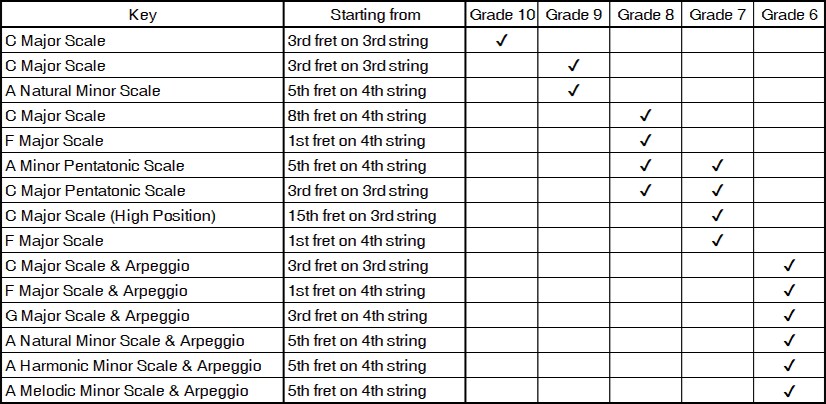
Procedure
1. Examiners give candidate information on the type, key, range and starting note of the scale to be played.
2. For Grades 7 and 6, examiners use a metronome to give the candidate the tempo as written in the score. *For Grades 10 to 8, candidates may play the scales in their own tempo.
3. Candidate plays the scale as required.
4. For Grades 8-6, repeat procedures 1 to 3 for the next scale.
- Note:
- Candidates are not allowed to use scores during the exam.
- The last note of ascending/descending may be played longer than the other notes.



